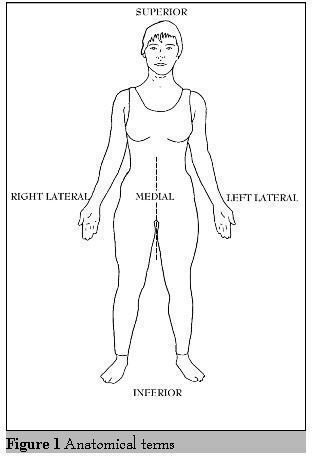Introduction to Human Anatomy: Basic Anatomical Terms
I took my first anatomy class when I was studying massage at the Esalen Institute in Big Sur, California. Before the class started, I thought that learning anatomy was going to be hard. I was pleasantly surprised that the information came naturally, especially when I related my studies to my own physical body. And then a wonderful thing started to happen: the more I learned about my body the more aware of it I became. I could feel how the bones and muscles in my legs worked as I walked, I could identify where a specific pain or malady resided, and I saw these same bone and muscle structures in the people around me.
For all of the reasons I just mentioned, learning how your body works is an important part of ones physical health. This introduction to the human body will cover the basic vocabulary words that are used in physiology and is meant to serve both as a reference to future Bright Hub articles on the human body and as a source for definitions of basic anatomical terminology.
Anatomy
The word anatomy comes from the Greek meaning “to cut up.” As you might imagine, at the start of anatomical studies, cutting up bodies was the only way to discovered what was inside of them. Today the term refers to both plant and animal structural organization (or what makes living organisms work).
You will find the following fields within the study of anatomy:
- Developmental Anatomy: Studies how bodies grow.
- Gross Anatomy: Studies structures that cannot be studied with a microscope.
- Regional Anatomy: Studies a specific region of the body like the chest or head.
- Systemic Anatomy: Studies specific parts of the body like blood vessels or the brain.
- Pathological Anatomy: Studies the structures of disease.
- Embryology: Studies the life of fertilized eggs.
- Cytology: Studies cells.
- Histology: Studies microscopic tissues.
Physiology
Physiology deals with the functions of the bodies specific parts (or how the body works). Sound a lot like anatomy? That’s because the two are closely connected, in fact, you can’t learn physiology without first learning anatomy. How could you know how something functions without knowing what it is?
Spatial Relations
When you’re reading texts on human anatomy it is important to know that the human body is always talked about as standing upright, with their arms down, and with their palms facing forward. With this position in mind you can become familiar with the following most common spatial terms:
Superior****:
Upper or higher
Inferior:
Under or lower
Anterior
The front
Posterior
The back
Medial
Near the middle of the body
Lateral
Away from the middle of the body
Proximal
Closer to the trunk of the body (used when talking about limbs)
Distal
Farther away from the trunk of the body (used when talking about limbs)
Disclaimer
The information in this article should not be considered medical advice. The information in this article is not meant to treat, diagnose, prescribe or cure any ailment. Always check with your physician before taking any products or following any advice you have read on Brighthub.com. Always consult your doctor before you start, stop or change anything that has been previously prescribed. Certain herbs and holistic remedies are unsuitable to take if you are pregnant or nursing and must always be cleared by your doctor before use.
Resources
Marshal, Clyde, M.D., and Lazier, Edgar, Ph.D. An Introduction to Human Anatomy. W.B. Saunders Company. 1964
Anagnostakos, Nicholas and Tortora, Gerard. Principals of Anatomy and Physiology. Harper and Row. 1981
